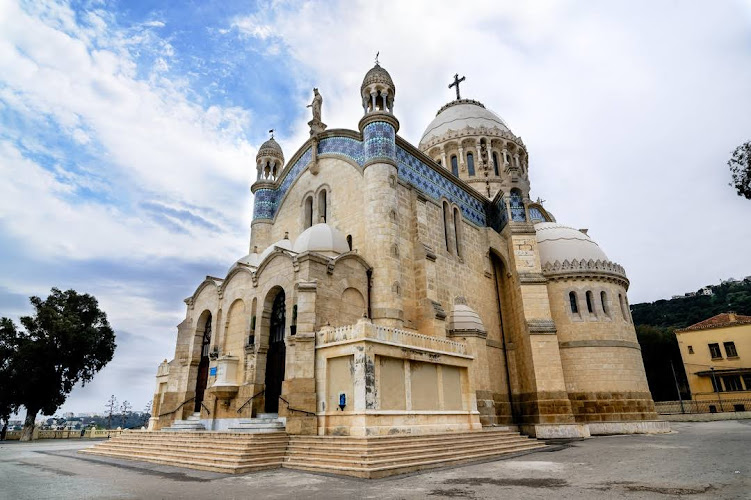About Church of Notre Dame d’Afrique
Description
Perched majestically on the cliffs overlooking Algiers Bay, the Church of Notre Dame d'Afrique stands as one of North Africa's most remarkable religious landmarks. This stunning 19th-century basilica, with its distinctive Byzantine-style architecture, isn't just another pretty church - it's a powerful symbol of cultural harmony that's touched me deeply during my visits. The church's famous inscription "Our Lady of Africa, pray for us and for the Muslims" speaks volumes about its role in fostering interfaith understanding.
I've always been particularly struck by the blend of Roman Catholic and Moorish architectural elements. The gleaming white exterior contrasts beautifully with the dark blue Mediterranean waters below, while the imposing dome and square tower create an unforgettable silhouette against the Algerian sky. Inside, you'll find yourself surrounded by intricate mosaics, restored paintings, and beautiful stained glass windows that filter the sunlight in the most magical way.
Key Features
• Byzantine-style architecture with a striking black Madonna statue
• Expansive terrace offering breathtaking views across Algiers Bay
• Beautifully restored 19th-century paintings and religious artifacts
• Unique blend of Roman Catholic and Moorish architectural elements
• Historic organ that still functions during special services
• Impressive collection of ex-votos from sailors and their families
• Detailed mosaic work throughout the interior
• Ornate marble columns and decorative capitals
• Peaceful garden area perfect for quiet reflection
• Regular religious services open to visitors
Best Time to Visit
From my experience, the best time to visit Notre Dame d'Afrique is during the spring months of March to May or autumn months of September to November. The weather's just perfect then - not too hot like the summer months when the sun can be pretty intense, especially when you're climbing up to the church. Plus, these shoulder seasons tend to have fewer tourists, which means you can enjoy the peaceful atmosphere without the crowds.
If you're hoping to catch that perfect photo, I'd recommend coming either early morning or late afternoon. The lighting during these times is absolutely gorgeous, and you'll get the most stunning views of the bay. Sunday mornings are particularly special, as you might catch a service in progress - though do remember to be respectful if you're visiting during worship times.
How to Get There
Getting to Notre Dame d'Afrique isn't too complicated, but it does require a bit of planning. If you're coming from central Algiers, you've got several options. Taxis are probably the most straightforward way - just make sure to agree on the fare before starting your journey. The local bus service also runs to the area, though you'll need to climb some stairs to reach the church itself.
For the more adventurous souls (like myself!), you can walk from the city center, but I've gotta warn you - it's quite a hike up those hills! The views along the way are worth it though, and you'll get to experience some of the local neighborhood character. Just remember to wear comfortable shoes and bring water, especially on warmer days.
Tips for Visiting
As someone who's visited multiple times, I can tell you that a little preparation goes a long way. First off, dress respectfully - this means covering your shoulders and knees. I once saw some tourists being turned away because they were wearing shorts, and trust me, you don't want that to happen to you!
Try to carry some small change for donations - while entry is technically free, contributing to the church's maintenance helps preserve this beautiful monument for future generations. Don't forget your camera, but check if photography is allowed inside during your visit - the rules sometimes change.
The church can get pretty busy during religious holidays, so plan accordingly if you're visiting during these times. I'd suggest spending at least an hour here to fully appreciate the architecture and soak in those amazing views. And speaking of views - the best spot for photos is from the terrace, especially during sunset when the light hits the bay just right.
Oh, and here's a pro tip that most guidebooks won't tell you: there's a small cafe nearby where you can grab a refreshing drink after your visit. The local mint tea is absolutely fantastic, and it's a great way to round off your experience while chatting with friendly locals.
If possible, try to join one of the occasional guided tours - the stories and historical details they share really bring the place to life. And don't rush through your visit - some of my favorite moments have been just sitting quietly in the garden, taking in the peaceful atmosphere and watching the boats sail across the bay below.
Copyright © 2025 RealJourneyTravels.com. All Rights Reserved.


